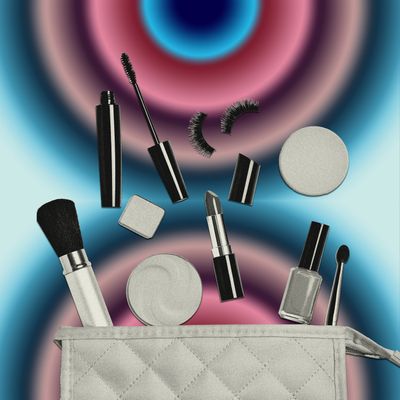
Forty-two countries and ten American states have laws in place that ban or limit cosmetics animal testing, but the practice still happens. And if you don’t want to give your money to companies that have a hand in animal cruelty — in any form, anywhere in the world — you have some sleuthing to do.
The first step is to choose products labeled “cruelty-free.” But hear me out because even that label can get complicated, and here’s why: There’s no legal definition of the term, and as the FDA points out, “some companies may apply such claims solely to their finished cosmetic products.” Meaning: A brand can label its lipstick “cruelty-free” because the bullet wasn’t swiped on a bunny, but it’s possible that one of its ingredients was tested on animals. Meanwhile, another beauty brand could call itself “cruelty-free” because it doesn’t currently test its finished products or ingredients on animals, without disclosing (perhaps because it isn’t aware or maybe it doesn’t want you to be aware) that one of its suppliers might have tested on animals in the past.
Speaking of raw materials, there are plenty of “cruelty-free” brands that aren’t vegan. For example, they may use ingredients such as Ci 75470, a red colorant made from tiny insects called cochineals, or squalane, which can be derived from shark liver. (These days, most squalane used in cosmetics is made from olives, rice bran, or fermented sugarcane, but all forms are called “squalane” on ingredient lists, so if a company doesn’t disclose its source, your squalane could come from sharks.)
As you can see, it’s murky, and the internet is awash in misinformation: You might have heard that beauty companies selling their products in China have to conduct animal testing, but as of 2021, “China lifted its ban on animal testing, making all general cosmetics — imported as well as domestically made — exempt from animal testing,” according to cosmetic biochemist Krupa Koestline, the (vegetarian!) founder of the product-development firm KKT Consultants. So it’s possible that a moisturizer sold in China hasn’t been tested on animals anywhere in the world. However, China still requires “special use” cosmetics to undergo animal testing. So if that moisturizer has sunscreen in it, then yes, it will be tested on animals. (You can find a list of special-use cosmetics that require animal testing in China here.)
You might also have heard that products sold in the European Union, which banned animal testing in 2013, are all cruelty free. But that’s not necessarily true. If a brand develops a new chemical, such as a proprietary skin-smoothing peptide, it has to submit proof of the ingredient’s safety to the European Chemicals Agency. ECHA works to avoid animal testing, but if the agency isn’t convinced of an ingredient’s safety, “it has the power to determine whether animal testing is required, meaning the protocol is contradictory to the animal-testing ban,” says Koestline.
What’s an animal-loving beauty consumer to do? I suggest outsourcing your sleuthing to an advocacy group, such as People for the Ethical Treatment of Animals, the Coalition for Consumer Information on Cosmetics, or Cruelty Free International. These groups run certification programs that vet products and companies according to a predetermined set of cruelty-free standards. But the standards vary! For example, companies that are part of CCIC’s Leaping Bunny Program can’t test on animals anywhere in the world, but they can still use animal-derived ingredients. And PETA has two certifications for its Beauty Without Bunnies program, one with a vegan designation and one without.
But even a third-party certification may not be enough for you depending on your personal code of ethics for animal welfare. For example, a brand may be Leaping Bunny certified, but it could be part of a parent company that owns other brands that are still tested on animals. Would that bother you? If so, you’ll want to research the company’s entire brand portfolio before making any purchases.
If this all seems antiquated and confusing, you’re right. Koestline says there are already ways to verify the safety of cosmetics without animals, such as testing on tissue cultures or 3-D–printed organelles. But some of these methods can be prohibitively expensive for companies or not convincing enough for conservative regulatory authorities. “There should be more funding and more research into finding new alternate methods for animal tests,” says Koestline. Hopefully, a change will come soon — AI-assisted computer models are already a promising alternative — and in ten years, I’ll be able to tell you animal testing is a thing of the past. But for now, you’ll have to use the resources above to do your own product vetting.
Jennifer Sullivan answers all your beauty-related questions with practical advice and zero judgment. Send your questions to AskABeautyEditor@nymag.com. (By emailing, you agree to the terms here.)
More Beauty Advice
- The Best Straightener for Your Hair Type, According to Hairstylists 2024
- Does CoolSculpting … Actually Work?
- How Do I Get Rid of My Nose Hair?





